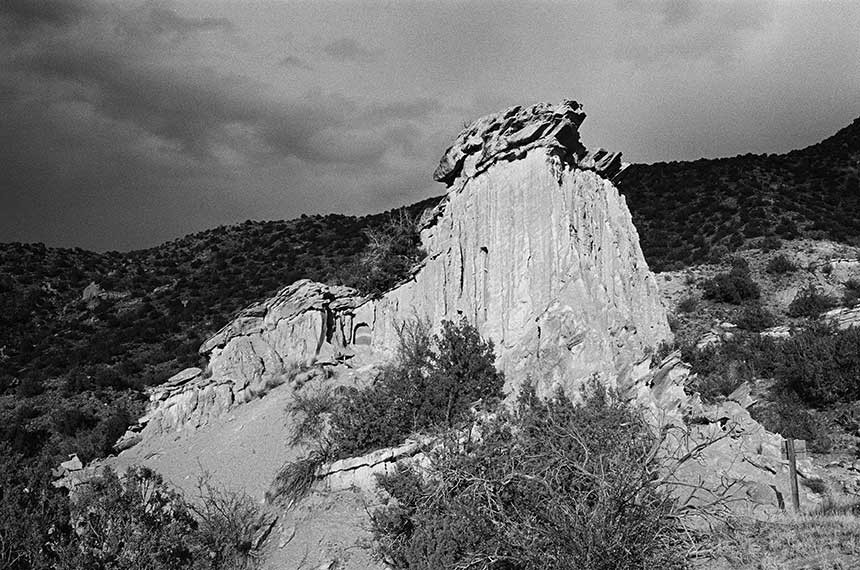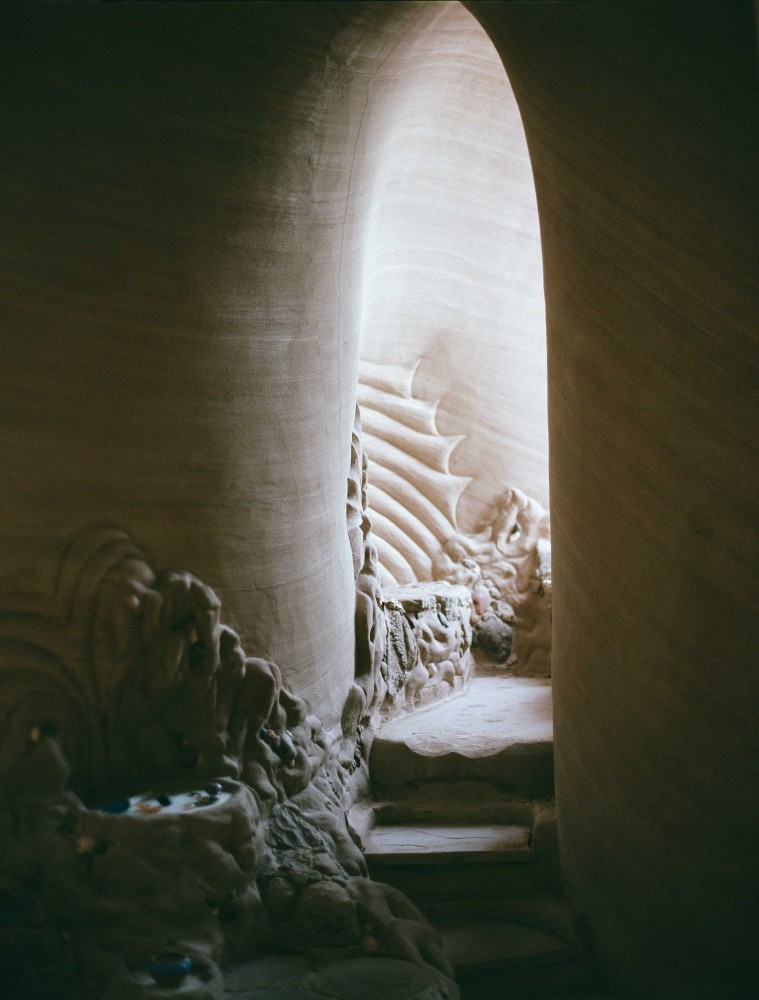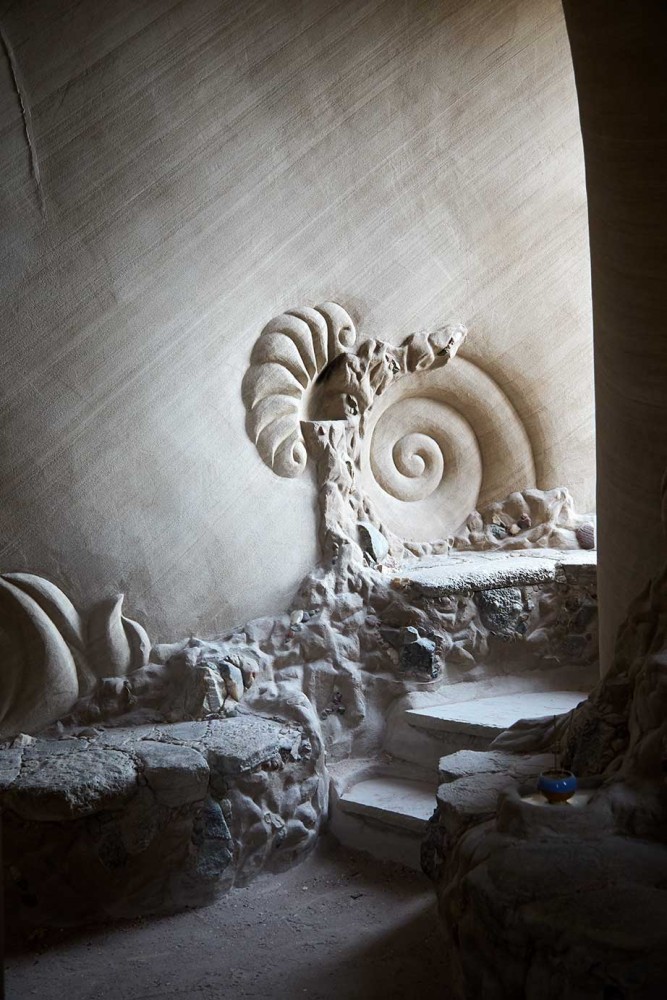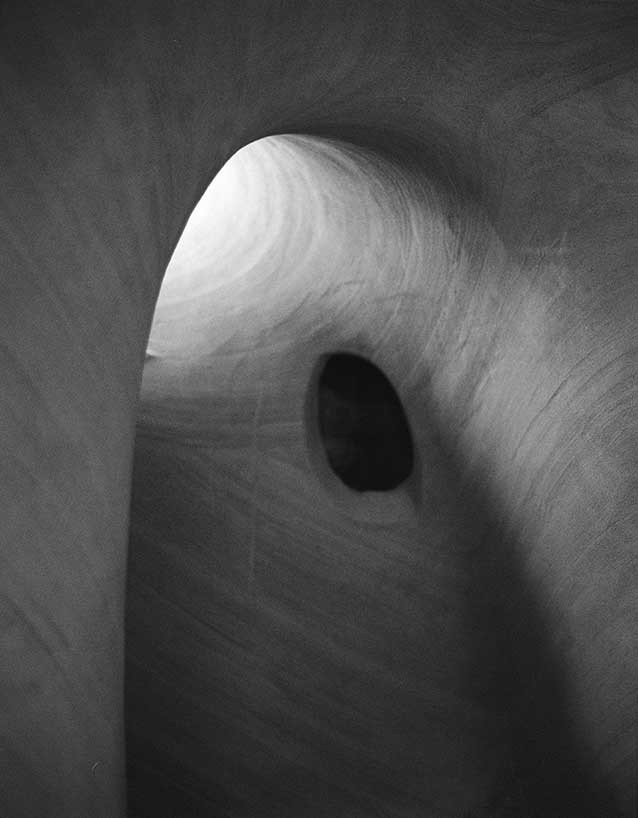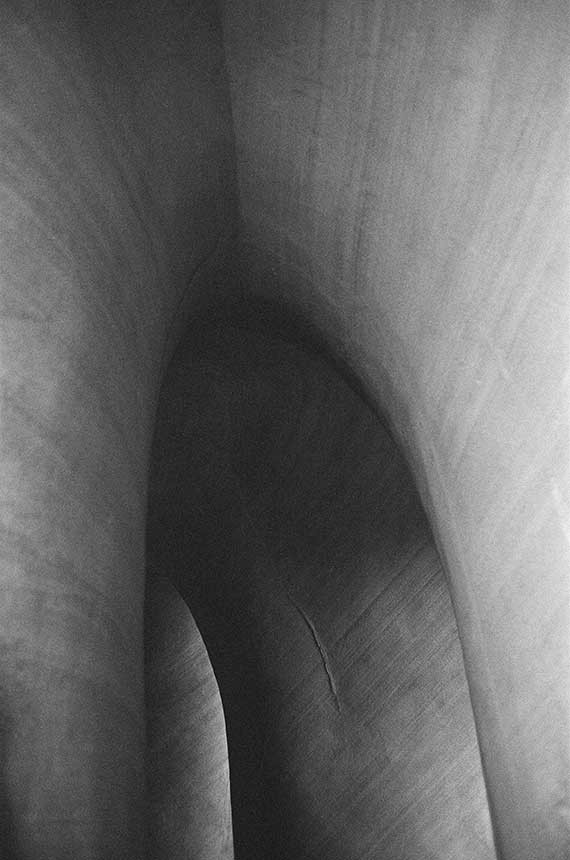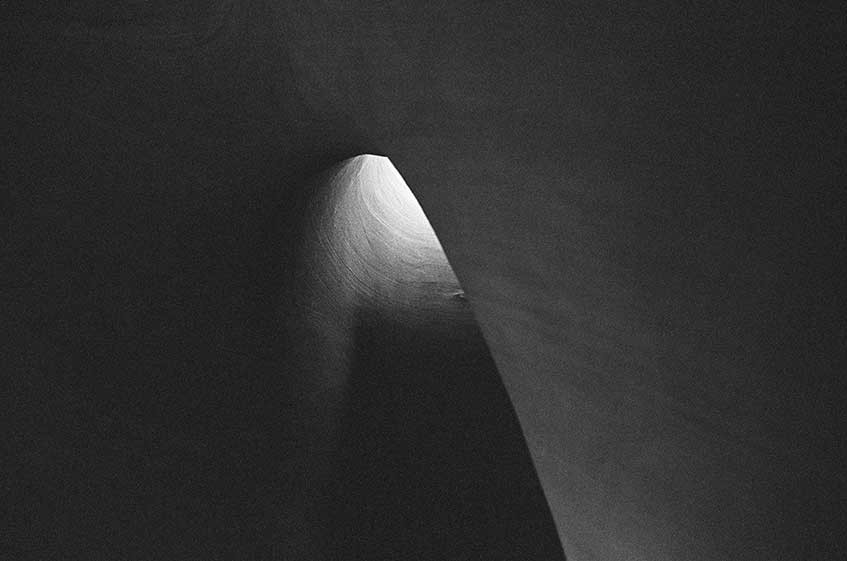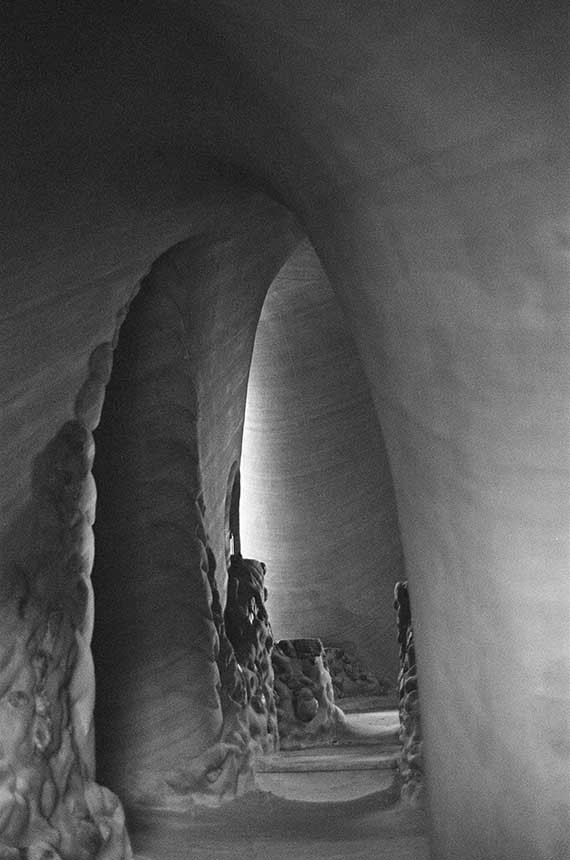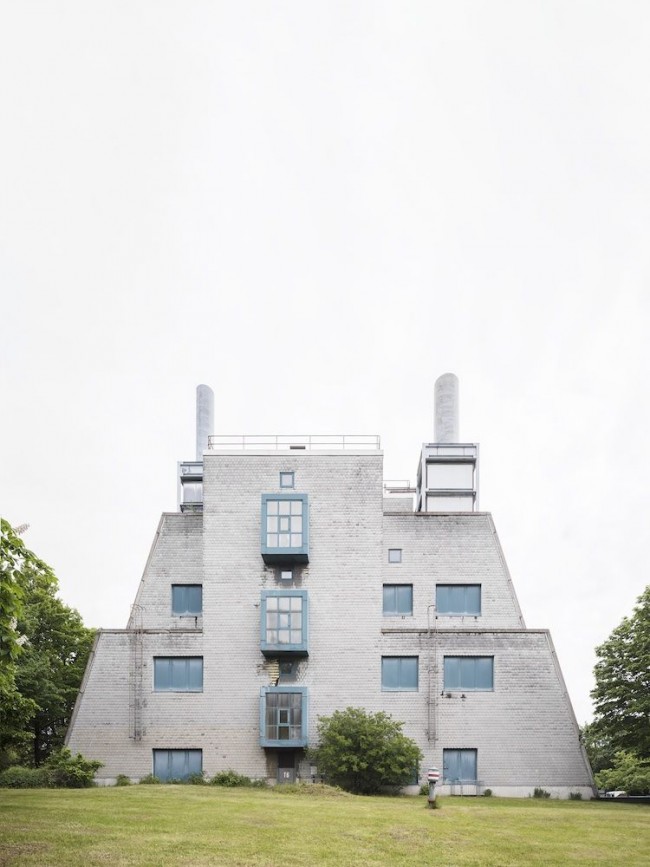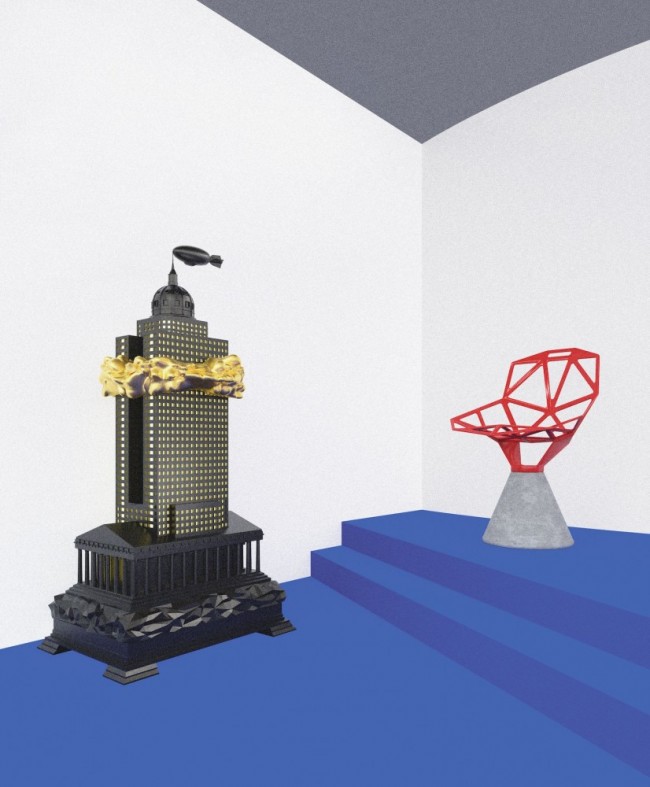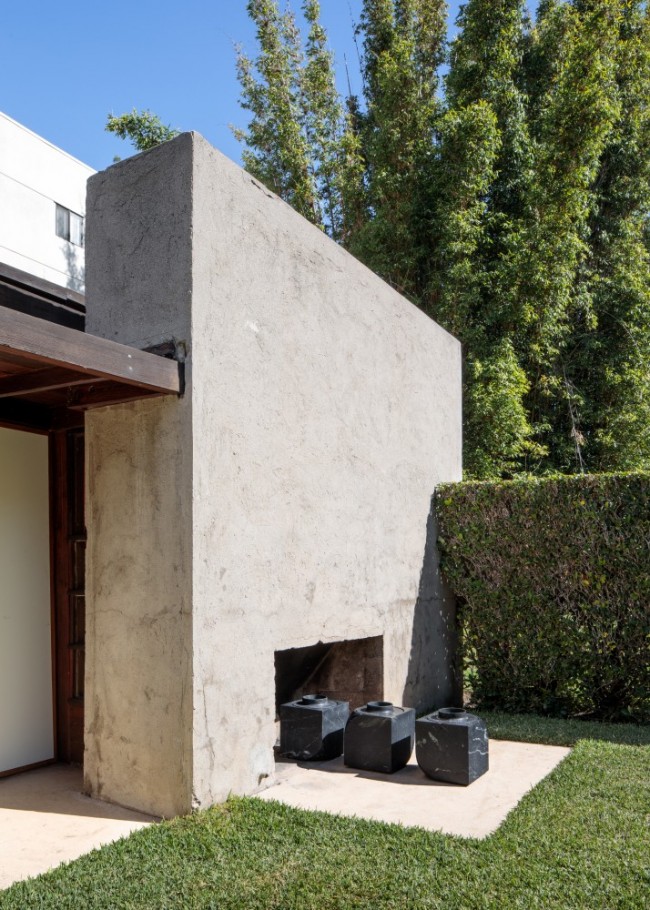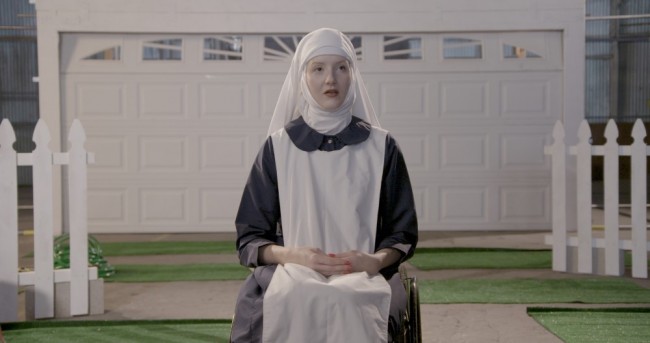DIG: A VOYAGE INTO The Hand Dug Desert Caves of RA PAULETTE
It’s midday in northern New Mexico, and the guided tour starts with a request (nay command) to stay on the sandy path. We’ve come to visit a cave: in 1994, local cave digger Ra Paulette (he shirks the term artist) began burrowing into a sandstone cliff to create the intricate interiors of Windows on the Earth, a sanctuary-like hideaway. Dug by hand over the course of two years, it comprises a sequence of tall and narrow vaults converging on a central space, where a throne-like seat is set high up in the wall; as you move through the cave, eccentric ornamentation — organic whorls, fossil-like seashells, shrine alcoves — punctuates implausibly smooth surfaces. It’s a wonder of man shaping the landscape, but first, we’ve stopped for a New Age biology lesson.

Windows on the Earth by Ra Paulette, photographed by Vincent Dilio for PIN–UP.
Jill Marie Inanna, our tour guide and the proprietress of Origin at Rancho de San Juan, a retreat center where Windows on the Earth is located, warns us not to step on the cryptobiotic soil crusts to either side of the trail. A rich humus of organic materials — moss, lichen, microfungi, and cyanobacteria — covers the desert hillside, a living surface whose fungal networks can stretch hundreds of miles. One misplaced footprint requires as much as two decades to heal. Inanna’s cautionary tale, like many she tells over the course of the three-hour tour, is intended as something beautiful, hopeful — a story of resilience in the arid climate — but it is also a bleak footnote in the book of late Anthropocene. Northern New Mexico is Georgia O’Keefe territory, her home in Abiquiu a 20-minute drive from Origin. But before conjuring up datura visions of vaginal flowers, we have to remember that the turn to Los Alamos is the next junction down the road. And nearby is Taos, a mesa scattered with earthships and Bucky domes, countercultural architectures of the 20th century, and home to the Taos Pueblo, a UNESCO World Heritage Center that continues to preserve in adobe the violence of colonization. So, taking Inanna at her word that the mycelium networks can reach up to 300 miles, we are connected to places, times, and ideas all at once. It’s a heavy history thick with layers of mystic Modernism and Cold War infrastructures.

Windows on the Earth by Ra Paulette, photographed by Vincent Dilio for PIN–UP.
Inanna touts Origin as a place of “healing and wholeness.” She purchased the 145-acre property — then named Rancho de San Juan Country Inn and Restaurant — in 2013 with the hope of transforming a luxury bed and breakfast into a mystical haven. But it’s going to take more than mindfulness and essential oils to remediate humankind’s damage to Gaia. To survive the Anthropocene’s technological and industrial impact, ecological soothsayers Donna Haraway and Anna Tsing argue for cross-species interconnectivity and places of refuge. When the mega-consequences of our own making prove too taxing, maybe we all need to shelter in a foxhole? A bunker? A cave?

Windows on the Earth by Ra Paulette, photographed by Vincent Dilio for PIN–UP.
Paulette, born in 1940 and raised in Indiana, first started digging caves in the early 1980s by chance and by calling. A Vietnam vet, he had served on a naval flagship and, like many men of his generation, came back from the war, damaged by the experience. On his return to the U.S., he searched for a place to settle down and chose New Mexico, which in the 1970s offered off-the-grid counterculture, the perfect habitat for a disaffected loner. Paulette kicked around the territory between Santa Fe and Taos working as a laborer on construction sites and as a trash collector. It’s a desert landscape marked by a particular geology — hoodoos, sandstone cliffs that have been shaped into sculptural formations by time, wind, and water. According to Inanna, Paulette saw some local kids digging a hole in the soft rock and was inspired to do the same. He started carving his first cave, the Heart Chamber, in 1984; it took him four years, using nothing more than a pickaxe, a chisel, and a few hand tools similar to the kinds used to smooth plaster, as he filled wheelbarrow after wheelbarrow with excavated stone the deeper he descended into the earth. In Jeffrey Karoff’s 2013 documentary Cavedigger, Paulette describes how he was driven by an overall vision and worked without a blueprint. His process, or what he describes as creating space through extraction, was about “finding god in the hole.”
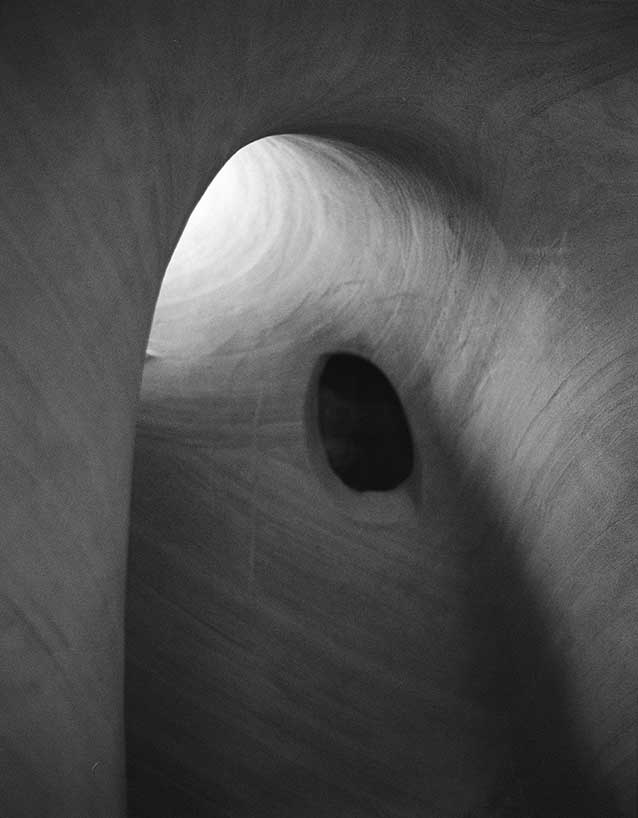
Windows on the Earth by Ra Paulette, photographed by Vincent Dilio for PIN–UP.
“Ra steeped himself in Mother Earth’s womb,” says Inanna; for her, Paulette’s cave-digging was a way of healing the trauma caused by his time in Vietnam. “He once told me that the Vietnam War is masculinity gone all wrong. Cave digging was the antidote … the polar extreme, the pendulum swinging backwards.” Now in his late 70s, Paulette’s excavating days are behind him. While Cavedigger documents the heartbreaking collapse of what would have been his magnum opus, a different misery — his divorce — led him to abandon his craft and flee media attention. These days he avoids interviews and has taken down his personal website, which archived the breadth of his career, leaving others to speak for him and interpret the work through their own histories and philosophies.

Windows on the Earth by Ra Paulette, photographed by Vincent Dilio for PIN–UP.
Inanna concludes her prologue and guides our group to the entrance of Windows on the Earth. She fits a key into the lock (yes, the cave has a door) and heads inside. We drop our cell phones in a basket and follow. The interior is surprisingly full of light, sunshine tracing over the sandstone curves while small mirrors set into the stone glitter like pools of water. Paulette considers himself an “intuitive engineer,” so he’s conservative as to what shapes and volumes sandstone can support without reinforcement. But that didn’t stop him from carving large openings through the face of the sandstone cliff. Windows on the Earth offers stunning views across the Ojo Caliente Valley, but it also stirs up internal paradoxes: sky versus stone, man versus nature, past versus future. There’s violence in taking a pickaxe to stone, of carving away at a butte that’s withstood tens of thousands of years, even if it’s in the service of one man’s creative fulfillment. The cave sanctuary is, in many ways, an anthropocentric vanity project designed for human aesthetic enjoyment. Its organic-bunker vibe lacks the critical reflection of 20th-century land art but is too refined to simply chalk up to art brut. Asked about these contradictions, Inanna pauses for a moment, ready to protect her lair, before drawing analogies to the dens dug by coyotes — places of refuge for the desert’s predators. She sighs as if she’s heard the critique before. “Mammals dig,” she explains, “and we are all mammals.”
Photography by Vincent Dilio.
Text by Mimi Zeiger.
Originally published in PIN–UP 26, Spring Summer 2019.

